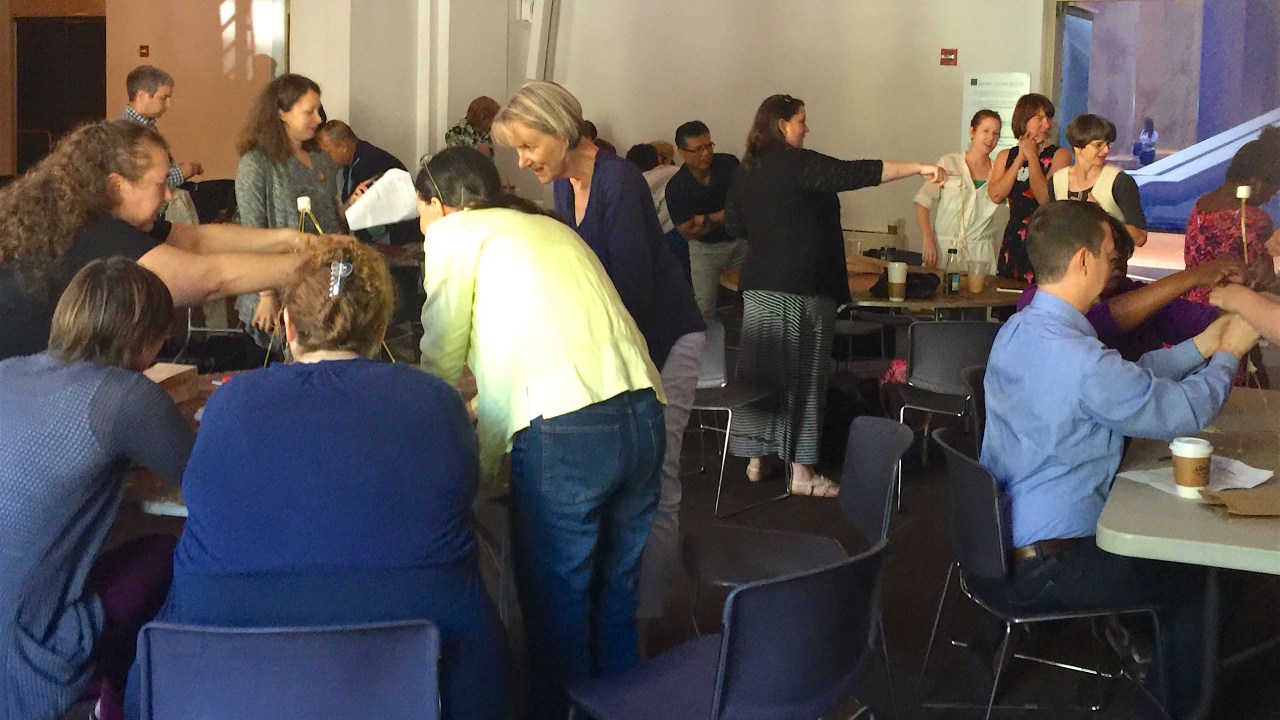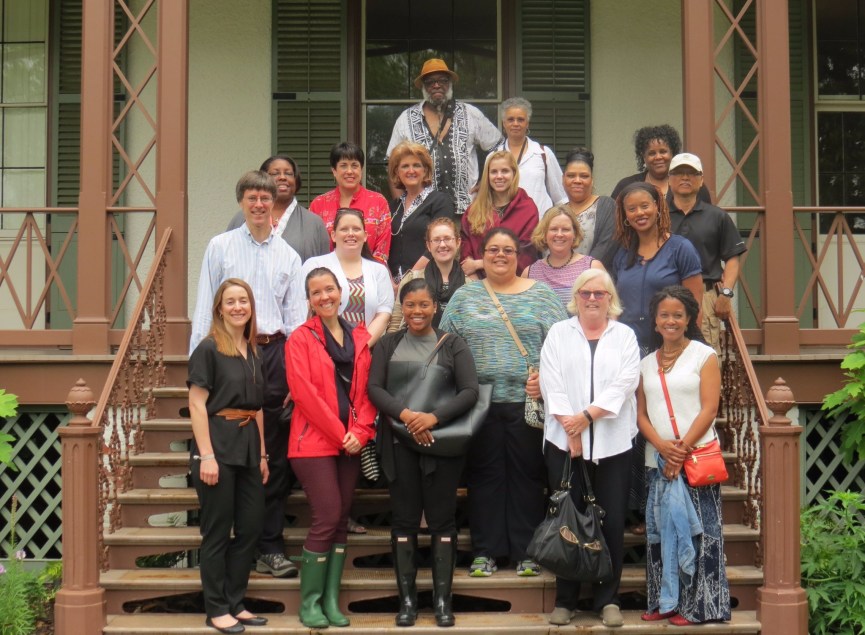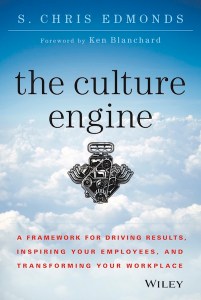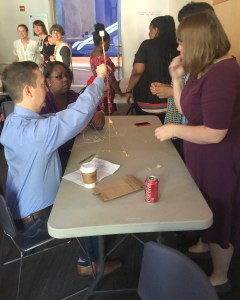
[cs_content][cs_section parallax=”false” style=”margin: 0px;padding: 0px 0px 5px;”][cs_row inner_container=”true” marginless_columns=”false” style=”margin: 0px auto;padding: 0px;”][cs_column fade=”false” fade_animation=”in” fade_animation_offset=”45px” fade_duration=”750″ type=”1/1″ style=”padding: 0px;”][cs_text]

I have always been a student of organizational culture – intrigued by how groups of people operate together and curious about how different leadership styles and management techniques can produce dramatically different outcomes from the same group of people.
You’ve probably heard the old adage attributed to nonprofit management guru, Peter Drucker, “Culture eats strategy for breakfast.” As it’s taught in management school, it’s meant to say you can have the best organizational strategy in the world, but if you don’t have the organizational culture to implement it, it’s moot.
Why, then, do we spend months and years developing strategy documents, agonizing over every word (I speak from recent experience) – and weeks or months developing detailed annual budget plans – yet, precious few organizations spend any time or effort defining and actively building their cultures?

I was determined, upon taking the helm of AAM sixteen months ago, that we were going to define, document and strengthen our organizational culture. It’s not that I thought we needed to change our culture…though it’s evolved quite a bit since I first joined AAM in 2010, with dramatic changes in leadership, staff composition and the organization’s priorities. There is some dispute about whether it’s worth trying to manage culture…if it’s even possible. Harvard Business Review’s April 2016 cover read “You Can’t Fix Culture.” Hmmpf. I respectfully disagree.
It just makes sense that something so important – so fundamental to our success or failure – needs some deliberate time and attention, and needs to be documented in some way, as are our other important strategies and plans. As we evolve to an ever more dynamic and diversified organization, reducing reliance on unspoken assumptions and being explicit about what’s expected (and what’s permitted – rigorous and respectful debate, for example) is important to building a safe, respectful, trustful and inspiring workplace where we all thrive. It’s important to me, as a leader, to recognize that how we get the work done (e.g., how we treat each other) is as important as what we accomplish.
Culture is made up of the values, beliefs, underlying assumptions, attitudes, and behaviors shared by a group of people; it’s the behavior that results when a group arrives at a set of rules for working together. It shapes our work enjoyment, relationships and processes. It’s a squishy concept – but the foundation for everything else.
Last summer, the Alliance was going through a lot of change – moving our office, reorganizing under a new President & CEO, and developing a new strategic plan. It was a unique opportunity to also focus on culture. As our 19-year old office was being sorted into what we were taking to our new space and what we were leaving behind, I engaged the AAM team in a discussion about what behaviors we would take with us and/or grow in the new office – and what behaviors to leave behind. That discussion became the basis for our culture document.

A staff member came across a book called The Culture Engine describing “how to create a high performing, values-aligned culture through the creation of an organizational constitution.” As we often do at AAM (see our Learn and Grow value), we passed the book around the Executive Team. One by one, several of the team members came in to tell me, “I think there’s a lot to this!” I thought, “Gee, I’d better read that book.” I did and, along with the team, decided it was worth a try.
We followed the book’s advice pretty closely, each doing our own introspection, focusing on behaviors (because you can’t really manage others’ attitudes) and engaging in lots of discussion and feedback along the way (avoiding what the book calls “Managing by Announcement”). Occasionally, one of us would wonder out loud why we were spending so much time on the intangible “culture” and asking for so much feedback. But we stayed the course.
After six months of work, the Executive Team was pretty excited to share our draft organizational constitution with the staff. We had hashed through a lot together and had repeatedly convinced and re-convinced ourselves we were on the right course. While the rest of the staff was aware this process was ongoing, their involvement was more indirect – and how their feedback was incorporated was less obvious to them.
Initially, we were met with more suspicion, and even resistance, than anticipated. Some questioned the need to put our values in writing and were offended that we did – especially the use of the “I” statements which came across as very direct and maybe condescending. Some were concerned about how the document would be used in performance management. Others raised important behaviors that weren’t reflected in the document and things that were still unclear.
Thankfully, we had followed the book’s advice about stamping the document as a draft to indicate that “it has been thought through, but it’s in need of employee input and validation.” We spent another month soliciting and incorporating that input from all staff. We also heeded the book’s advice to be explicit that the Executive Team was expected to model the behavior first – before it was incorporated into all-staff performance evaluations and other processes.
One of the toughest decisions we made was to maintain the use of “I” statements. The “I” statements are important for a couple of reasons. For one, everyone has a personal responsibility for contributing to AAM’s culture. Framing the behaviors as “I” statements is intended to reinforce this. Another key reason is that it’s important for everyone – whether an administrative assistant brand new to the organization or a vice president who’s been here for 30 years – to understand that they have a right to be treated in the ways outlined in the constitution. Every single person at AAM has a right to speak up and share new ideas, to seek out professional development opportunities, to be respected and included, etc.

Of course, this is ongoing work. We must live these values, build them into our processes and measure our results. In the six months since we implemented our organizational constitution, it is influencing recruiting and hiring decisions as well as existing personnel policies including performance management and 360 feedback. It is driving resource allocation decisions.
For example, with many competing priorities for our time and budget, we:
- Celebrate our passion for museums by making time for staff field trips to several of the museum gems we’re lucky to have here in the Washington DC metro area. In addition to critical out-of the-office bonding among staff and learning about each other’s personal interests and experiences, these visits give us insight into the challenges and opportunities of our members.
- Share headlines, stories and pictures of museums in the news (and our vacation plans) on a “Cool Museum News” board in our office café, provoking fun and informative sharing and discussions over our morning coffees.
- We embraced a “Summer of Learning” with eight staff-led “skill share” sessions ranging from “Spotting Communications Styles Through Birdwatching” to “Excellent Excel Tips” from our accounting team.
We will share more details of our experiments here, as we go – and welcome your own stories and ideas about the cultures in your institutions.
Take a look at AAM’s culture document: AAM’s Organizational Constitution (PDF Download).[/cs_text][/cs_column][/cs_row][/cs_section][/cs_content]









Very interesting and thought provoking. As much as I have heard about Drucker over the years, I had not actually heard or seen that quote before. Unfortunately, I spent quite a lot of time in an organization (in particular, with a non-museum parent organization) where bad corporate culture simply devoured every attempt at strategic planning or focussed allocation of resources. I entirely understand why AAM undertook this effort and I hope it continues to prove fruitful.
Hmmm. I am looking for ‘the’ AAM Constitution, but am able to find only the “AAM Organizational Constitution” rather deep in this blog post. Is ‘the’ AAM’s foundational governance Constitution document not available to members on-line? I have missed it in my logged-in search of the AAM web site. Any advice, link, or PDF would be most welcome.